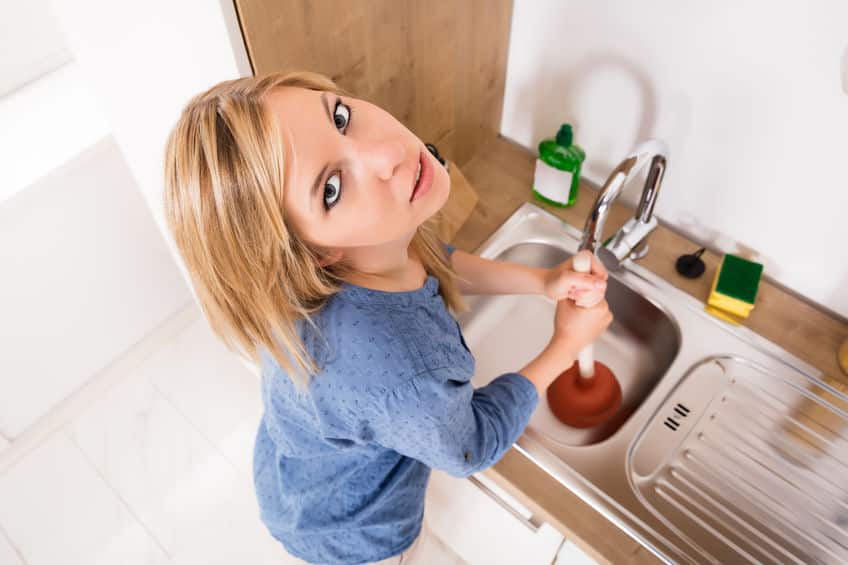Verified Ways to Fix a Leaking Waste Disposal Unit
Verified Ways to Fix a Leaking Waste Disposal Unit
Blog Article
We've come across the article about The Handy Guide To Fixing Your Garbage Disposal Leaking below on the internet and decided it made perfect sense to share it with you on my blog.

Garbage disposals are vital kitchen area devices that aid in taking care of food waste effectively. Nevertheless, a dripping garbage disposal can be an aggravating and messy problem to manage. Thankfully, numerous leaks can be dealt with conveniently with a couple of basic steps. In this short article, we will review exactly how to deal with a leaking waste disposal unit effectively.
Intro
Waste disposal unit are set up under cooking area sinks and are designed to shred food waste right into smaller items, permitting it to go through the plumbing system conveniently. While these devices are normally trusted, leakages can take place over time as a result of deterioration, loose links, or damages to the device.
Common Sources Of Leakages in Trash Disposals
Worn Seals and Gaskets
Seals and gaskets play a vital role in protecting against water from leaking out of the waste disposal unit. Over time, these components can degrade, leading to leakages around the disposal unit.
Loose Connections
The links between the waste disposal unit and the plumbing system can become loose with time, creating water to leak out throughout procedure.
Fractures or Holes in the Disposal Unit
Physical damage to the waste disposal unit, such as fractures or openings in the real estate, can also cause leakages.
Identifying the Source of the Leakage
Prior to attempting to fix a dripping garbage disposal, it is necessary to recognize the source of the leak. This can normally be done with visual evaluation or by carrying out easy tests.
Visual Inspection
Examine the waste disposal unit unit thoroughly for any kind of indicators of water leak. Pay very close attention to locations around seals, gaskets, and link points.
Testing for Leakages
One means to examine for leakages is by running water via the disposal unit and checking for any type of noticeable indications of leakage.
Devices and Materials Needed for Dealing With a Dripping Garbage Disposal
Before beginning the repair service procedure, collect the essential devices and materials, consisting of a screwdriver, flexible wrench, plumbing professional's putty, substitute seals or gaskets, and epoxy or patching material for fixing cracks or holes.
Step-by-Step Overview to Repairing a Dripping Garbage Disposal
Turn Off the Power
Before trying any type of repair services, make certain that the power to the waste disposal unit unit is switched off to stop the risk of electrical shock.
Find the Leak
Identify the specific location of the leak and establish the cause.
Tighten Connections
Use a wrench to tighten up any kind of loose connections in between the disposal unit and the plumbing system.
Change Seals or Gaskets
If the leak results from worn seals or gaskets, eliminate the old parts and change them with new ones.
Patching Splits or Openings
For splits or holes in the disposal unit, usage epoxy or an appropriate patching product to seal the damaged area.
Evaluating the Garbage Disposal After Repair Work
When the fixing is full, examine the waste disposal unit by running water via it to make certain that the leak has actually been dealt with.
Preventive Maintenance Tips to Stay Clear Of Future Leaks
To prevent future leaks, it is vital to do routine maintenance on your garbage disposal. This includes maintaining it tidy, avoiding putting non-food items or tough objects down the disposal, and occasionally checking for leakages or various other issues.
Verdict
Finally, fixing a leaking waste disposal unit is a reasonably uncomplicated procedure that can be completed with basic devices and products. By complying with the steps laid out in this article and exercising precautionary upkeep, you can keep your waste disposal unit in good working condition and stay clear of costly fixings in the future.
HERE’S HOW TO FIX YOUR GARBAGE DISPOSAL
WHAT TO DO IF SOMETHING IS STUCK IN YOUR GARBAGE DISPOSAL
If the impeller won’t turn, there’s probably something stuck in the disposal. It could be a steak bone or peach pit, although plumbers report pulling all sorts of inappropriate objects out of disposals, such as bottle caps or aluminum foil. Make sure power to the disposal is off, and look inside to see if you can see the source of the jam.
Never stick your fingers in a disposal. Pull out anything you see with tongs or pliers.
If the disposal still won’t work, it may be time to call a plumber or consider buying a new disposal. GEM Plumbing & Heating is here for all of your garbage disposal needs.
WHAT TO DO IF YOUR GARBAGE DISPOSAL DRAIN IS CLOGGED
Take everything out from underneath your sink and put a bucket or other container under your disposal to catch any water that drains out. Disconnect your disposal from the power supply. If it’s plugged into a wall outlet, unplug it. If it’s hardwired into an electrical box, go to the electrical panel and turn off the breaker for the disposal. Pour ¼ cup of baking soda into the drain, followed by ½ cup of white vinegar. Give the solution a few minutes to fizz and do its work. Look into the disposal with a flashlight to see if you can see an object that might be causing the clog. If you see it, remove it using tongs or pliers. MORE TIPS ON DEALING WITH A CLOGGED GARBAGE DISPOSAL
Never use drain cleaner in a garbage disposal. It can damage the plastic parts inside the disposal. You can also be splashed with the caustic liquid while working to clear the clog. Beware! Never stick your fingers into a garbage disposal. Trust us — not a good idea. In many instances, your dishwasher drains through your garbage disposal. This allows the disposal to grind any large food particles that may be drained out of your dishwasher. There are some jurisdictions, however, where the plumbing code prohibits such a connection. WHAT TO DO WHEN YOUR DISHWASHER DRAINS THROUGH THE DISPOSAL
Run some water in the sink so your plunger has at least a ½-inch of water to create a seal and plunge vigorously up and down several times. You may need to repeat this several times. Run hot water down the drain to clear any residue that remains.

We hope you enjoyed reading our section on Why Is . Many thanks for taking a few minutes to read through our blog post. Sharing is nice. Who knows, you will be helping someone out. We thank you for reading our article about Tips on Fixing a Leaking Garbage Disposal.
Request Your Service Report this page